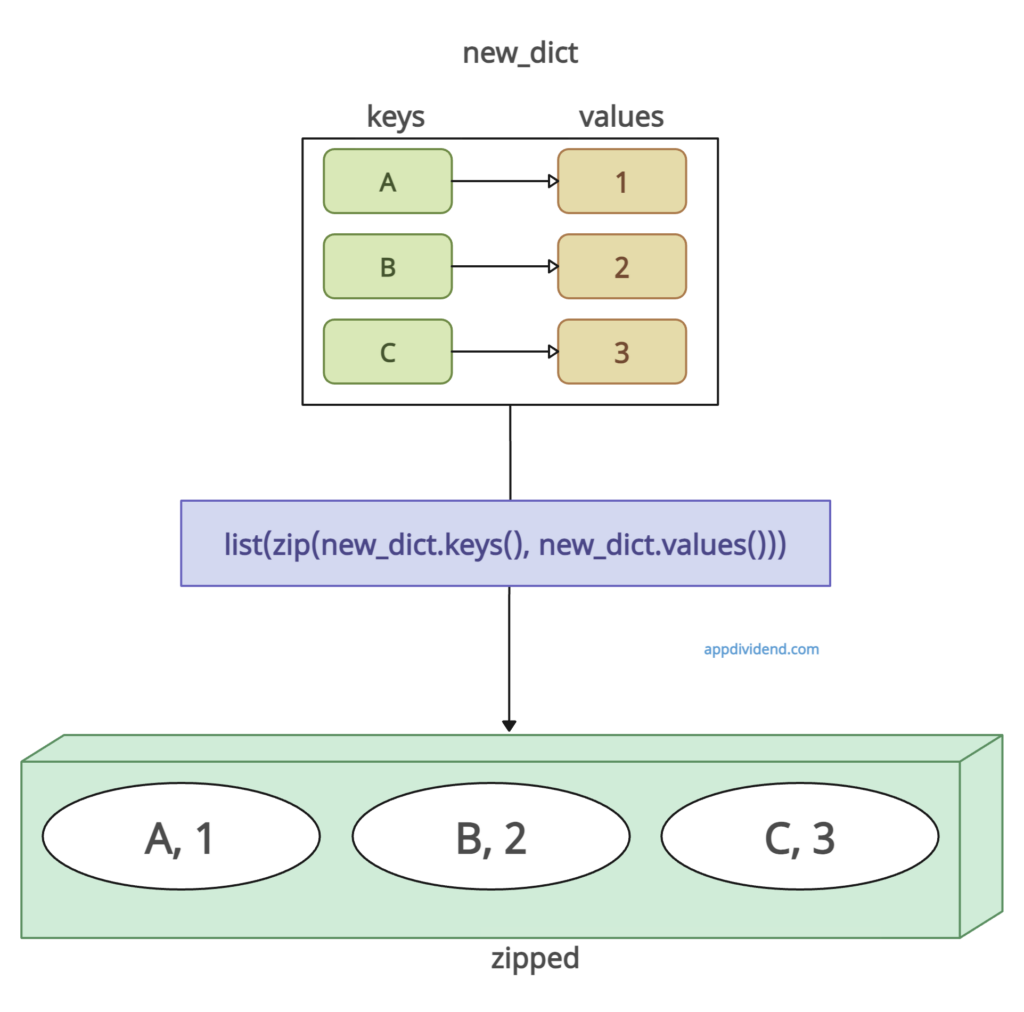Here are four ways to zip a dictionary in Python:
- Zip Keys and Values Together
- Zip Dictionary with Dictionary
- Zip Dictionary with List
- Using dict()
Method 1: Zip Keys and Values Together
If you want to create a list of tuples where each tuple is a key-value pair, you can use the zip() function along with the dictionary’s keys() and values() methods.
Visual Representation
Example
new_dict = {'A': 1, 'B': 2, 'C': 3}
zipped = list(zip(new_dict.keys(), new_dict.values()))
print(zipped)Output
[('A', 1), ('B', 2), ('C', 3)]Method 2: Zip Dictionary with Dictionary
The zip() function pairs elements from corresponding positions in the two iterables, and list() is used to convert the result into a list format.
Example
new_dict = {'A': 1, 'B': 2, 'C': 3}
other_dict = {'D': 4, 'E': 5, 'F': 6}
zipped = list(zip(new_dict.items(), other_dict.items()))
print(zipped)Output
[(('A', 1), ('D', 4)), (('B', 2), ('E', 5)), (('C', 3), ('F', 6))]Method 3: Zip Dictionary with List
This method works the same as the above method; the only difference is that it combines the items of the dictionary with the elements of the list.
Example
new_dict = {'A': 1, 'B': 2, 'C': 3}
new_list =[4, 5, 6]
zipped = list(zip(new_dict.items(), new_list))
print(zipped)Output
[(('A', 1), 4), (('B', 2), 5), (('C', 3), 6)]Method 4: Using dict()
The zip() function pairs elements from both lists, producing an iterable of tuples.
The dict() then takes these tuples and creates a dictionary where elements from the first list are the dictionary keys and elements from the second list are the corresponding values.
Visual Representation
Example
new_list = ['A', 'B', 'C']
other_list = [1, 2, 3]
zipped_dict = dict(zip(new_list, other_list))
print(zipped_dict)Output
{'A': 1, 'B': 2, 'C': 3}



Erick
print(dict(list(enumerate(my_list))))